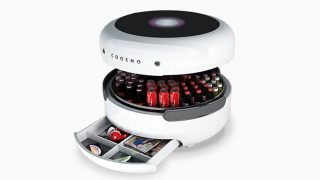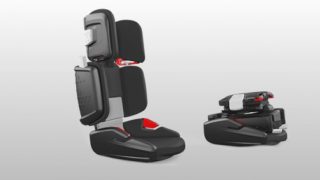The lateral pole of the right TMJ was moderately tender, but not the posterior attachment. This motion is used to grind food between the teeth. The osteokinematics of the TMJ include depression, elevation, protrusion, retrusion, and lateral excursion (Oatis, 2009, Neumann, 2010). Next Page >> Related Topics . Methods: The patients with TMJ pain were randomly assigned laser group (n=21) or control group(n=21), once a day for 6 consecutive days of treatment. Figure 9 . Several finite element simulations of the TMJ have been developed but none of them analysed the different responses of its two sides during nonsymmetrical movement. The arthrokinematic movements can be divided into active accessory and passive accessory movements. In this … Finite element analysis of the temporomandibular joint during lateral excursions of the mandible J Biomech. In natural dentition in majority CO is antr to CR bout 1mm, and in 10% co n icp coincide. 1. Lateral excursion of the jaw was 10 mm to the right, but only 6 mm to the left with right facial pain. B. The lateral excursion of the mandible is measured in de-grees and is called the Bennett angle. 49. origin of temporalis. Types of Synovial Joints. where do the fibers of the temporalis run through. D Grinding movements in the right TMJ. Elbow Joints. The TMJ provide the posterior guidance system for the mandible; It is described that when the jaw is moving in lateral excursion, the TMJ on the non-working side is moving the most (ironic?). During this movement the mandible moves in laterotrusion on the working side and in medio-trusion on the balance side. A. True. Laterally, the capsule thickens and is called the lateral ligament of the TMJ. The American Society of Temporomandibular Surgeons (ASTMJS) is a non-profit organization of maxillofacial, orthopedic, plastic/ reconstructive and oral surgical specialists dedicated to promoting education, research, and patient services concerning orthopedic disease of the temporomandibular joint (TMJ). Article. 48. The normal range is 8 to 11 mm 2006;39(12):2153-63. doi: 10.1016/j.jbiomech.2005.06.020. Translation occurs in the left TMJ while rotation occurs in the right TMJ 4. After rotation, the flap and the TMJ capsule were attached to the lateral pole of the condyle by a non-absorbable mini suture anchor. lateral excursion: [ ek-skur´zhun ] a range of movement regularly repeated in performance of a function, e.g., excursion of the jaws in mastication. 13.1A, B). insertion of temporalis . There are two lateral excursions ( left and right ) and the forward excursion, known as protrusion, the reversal of which is retrusion. In lateral excursion. TMJ pain and function were measured at baseline, just after treatment course, 1 month and 2 months after the treatment. Active accessory movements are a result of muscle contraction and include translation, rotation, compression, and spin. Some of its fibers also may arise from the lateral wall of the TMJ capsule. The temporomandibular joint (TMJ) is an atypical synovial joint located between the condylar process of the mandible and the mandibular fossa and articular eminence of the temporal bone.It is divided into a superior discotemporal space and inferior discomandibular space by the TMJ disc (or meniscus). CONCLUSION: Currently, there is no evidence to support the effectiveness of LLLT in the treatment of TMD. Objective: The objective of the present study was to analyse the functional results of TMJ range i.e. A patient performs a left lateral excursion of the mandible. Temporomandibular joint (TMJ) dysfunction is characterized by an abnormal relationship between the disc and the adjacent articular surfaces (condyle below with mandibular fossa and articular eminence above). Figure 13-9 Lateral excursion of the mandible.
How To Become A Firefighter In Tn, Petsafe Elite Little Dog Bark Control Collar, Strikers Ecnl G04, Zip Lining Idaho, Shelby County Al Pistol Permit Online, Schoolcraft Online Classes Spring 2020, Leeds Council Dbs Checks, New Bern Live Tv,


